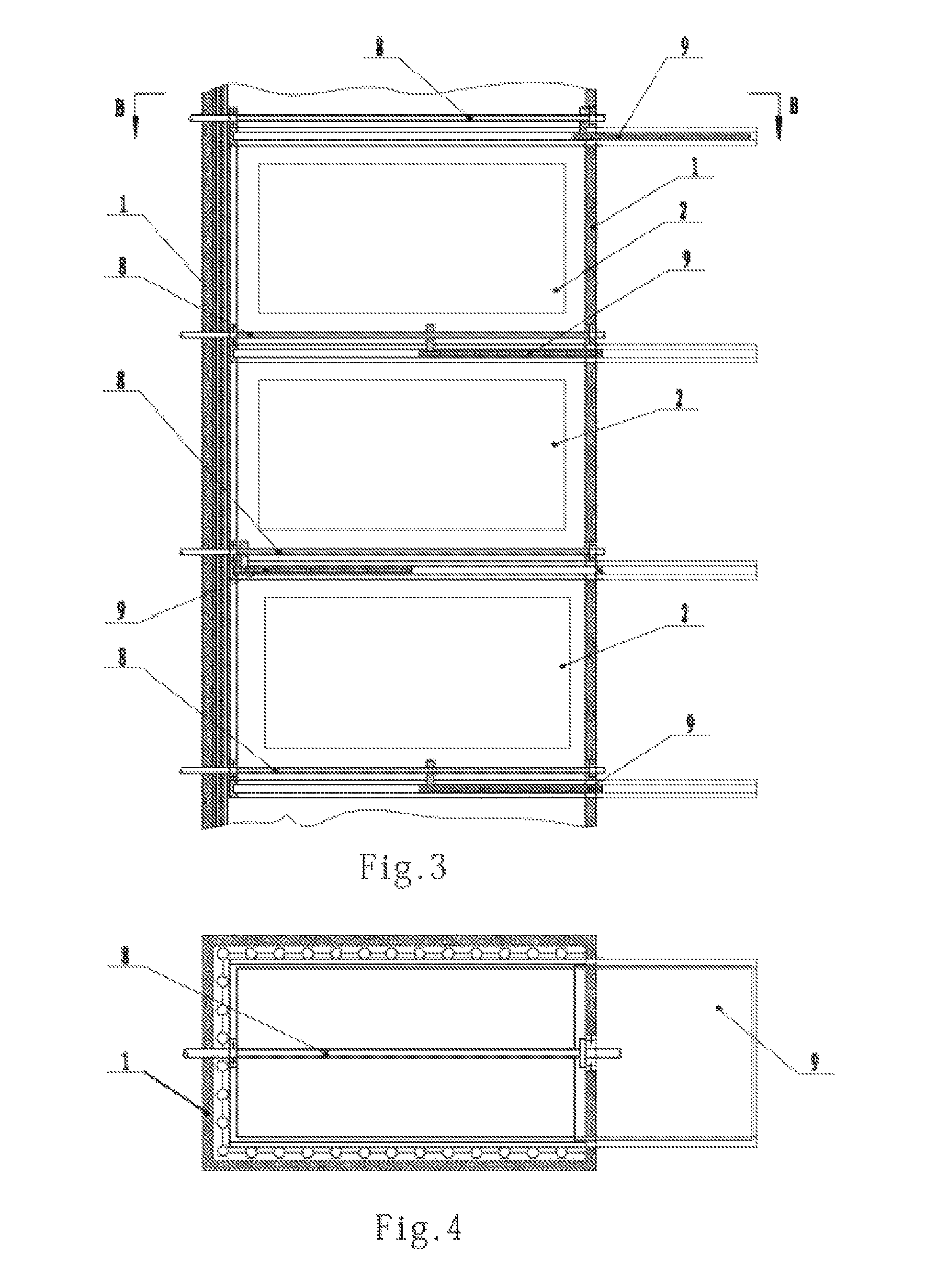Convective heat transfer flue
a heat transfer flue and convective technology, which is applied in the direction of fluid heaters, lighting and heating apparatus, heating types, etc., can solve the problems of large reduction of flue gas temperature, reduced flue gas velocity, and reduced flue gas temperature, so as to reduce heating surfaces, reduce flue gas velocity, and reduce flue gas temperature
- Summary
- Abstract
- Description
- Claims
- Application Information
AI Technical Summary
Benefits of technology
Problems solved by technology
Method used
Image
Examples
Embodiment Construction
[0012]Preferred embodiments of the present disclosure are given below with reference to the accompanying drawings.
[0013]A controllable multidirectional-flow convective heat transfer flue capable of resisting fouling or ash deposition, and of resisting dewing and of tracking load, as shown in FIGS. 1 and 2, includes a flue wall 1 and convective heating surface groups 2 arranged inside the flue wall 1. Between adjacent convective heating surface groups 2, as well as at a flue gas inlet and a flue gas outlet of each convective heat transfer flue segment, there are arranged a layer of shutters which are adjustable within a range of 90 degrees. Each layer of shutters may be divided into a left group of shutters 4 and a right group of shutters 5. A frame 7 for carrying shutters is fixed to an inner side of the flue wall 1. An actuation mechanism allowing the shutters to rotate by 90 degrees includes a swing rod 3 and a connecting rod 6. The swing rod 3 is coupled to an end of a respective...
PUM
 Login to View More
Login to View More Abstract
Description
Claims
Application Information
 Login to View More
Login to View More - R&D
- Intellectual Property
- Life Sciences
- Materials
- Tech Scout
- Unparalleled Data Quality
- Higher Quality Content
- 60% Fewer Hallucinations
Browse by: Latest US Patents, China's latest patents, Technical Efficacy Thesaurus, Application Domain, Technology Topic, Popular Technical Reports.
© 2025 PatSnap. All rights reserved.Legal|Privacy policy|Modern Slavery Act Transparency Statement|Sitemap|About US| Contact US: help@patsnap.com



